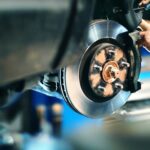Car Plastic Trim Repair
When it comes to maintaining your car’s aesthetic appeal, plastic trim repair often gets overlooked. Yet, it’s an essential aspect of vehicle maintenance that can significantly improve your car’s appearance. I’ve spent years mastering the art of plastic trim repair, and I’m here to share my knowledge with you.
You’d be surprised how much of a difference a little attention to your car’s plastic trim can make. Whether it’s sun damage, scratches, or just the wear and tear of daily use, your car’s trim can start to look worn out and old. But don’t fret, I’ve got tips and techniques that’ll help you restore it to its former glory.
In this article, we’ll delve into the world of car plastic trim repair. You’ll learn what tools you’ll need, the different types of plastic used in car trims, and step-by-step instructions on how to repair them. So, buckle up and get ready to give your car the TLC it deserves.
Why is Plastic Trim Repair Important?
In my years as an automotive care professional, I’ve understood how crucial a role plastic trim repair plays in maintaining a car’s overall appeal and condition. It’s more than just cosmetic. Let’s delve further.
Protecting the Appearance of Your Car
Imagine your car with its plastic trim worn out, faded or damaged. It doesn’t paint a pretty picture, right? That’s exactly why plastic trim repair is essential. It helps restore your car’s aesthetics, ensuring it continues to look as good as new. First impressions are often visual, and when it comes to your vehicle, you’d want it to shine, metaphorically and literally.
The types of plastic used in car trims significantly affect their aesthetic quality. Common materials include ABS (acrylonitrile butadiene styrene), POM (polyoxymethylene) and PVC (polyvinyl chloride). Each of these materials has unique characteristics that require specific repair techniques. Hence, understanding their peculiarities helps ascertain the best approach to repairing and restoring each. Don’t fret though. I am here to guide you through the process.
Preventing Further Damage
Plastic trim repair goes beyond mere visuals—it is instrumental in maintaining the overall health of your vehicle. When left unchecked, damaged plastic trim can lead to more severe problems. Cracked or broken trim can let in moisture, potentially causing rust and other forms of damage.
For example, let’s consider PVC, widely used for its versatility and lower cost. Damaged PVC trim could lead to the infiltration of moisture, especially in regions with harsh weather conditions, Consequently, the metal components of your car may rust over time if not promptly handled. Hence, immediate and effective plastic trim repairs can help prevent such issues, saving you from potential future repair costs.
Next time you look at your beat-up trim pieces, remember they serve a purpose beyond just making your car look good. Acting fast and getting them repaired ensures your car’s appearance remains top-notch while also protecting it from additional damage. Color restorations, patching up holes, fixing cracks, just to name a few, make a compelling case for the importance of plastic trim repair.
As we venture further into the article, I’ll be sharing with you useful tips and step-by-step instructions for DIY repair of the plastic trim in your vehicle. Don’t worry if you’ve never picked up a repair tool before. I’ve got you covered! By the end, you’ll have intimate knowledge of the tools and techniques needed to maintain not just the form, but also the function of your vehicle’s trims.

Common Types of Plastic Trim Damage
It’s clear that car plastic trim repair is vital for maintaining your vehicle’s look and overall health. You’ve learned about the different types of plastic used in car trims and their unique repair needs. You’ve also acquired some valuable tips, instructions, and information about the tools you’ll need for a successful DIY repair job.
Remember, neglecting to repair worn or damaged plastic trims can lead to further damage. So, it’s crucial to act promptly and appropriately.
By now, you should feel more confident in tackling plastic trim repairs on your own. It’s not as daunting as it may seem. With the right knowledge, tools, and a bit of patience, you can keep your car looking its best for years to come.
Remember, your car is an investment. Protecting and maintaining its aesthetic appeal through proper plastic trim care is just as important as its mechanical upkeep. So, don’t overlook the importance of regular plastic trim checks and repairs.
After all, a well-maintained car isn’t just about performance. It’s about pride of ownership too.







































